In the tech world, clarity is king, and Swagger documentation wears the crown. Imagine trying to navigate a new city without a map—frustrating, right? Swagger swoops in like a superhero, turning complex APIs into easy-to-understand guides. With its user-friendly interface and interactive features, it transforms the daunting task of documentation into a walk in the park.
Table of Contents
ToggleOverview of Swagger Documentation
Swagger documentation facilitates clear interaction with APIs. This tool offers a structured framework for describing API endpoints, request types, and response formats. Developers can generate API documentation easily, thanks to Swagger’s intuitive annotations.
Interactive features enhance user engagement. End users gain the ability to execute API calls directly from the documentation interface, providing immediate feedback. Such a dynamic experience reduces ambiguity when implementing APIs.
OpenAPI Specification standardizes API documentation. This widely adopted format ensures consistency across various platforms and languages. Many organizations leverage this specification to streamline their development processes and enhance collaboration.
Comprehensive documentation benefits teams significantly. By maintaining clear API definitions, developers minimize misunderstandings and reduce errors. Structured formats like Swagger promote efficient communication within teams.
Integration with tools amplifies Swagger’s capabilities. Many CI/CD platforms support Swagger, allowing for seamless updates and improvements to documentation as the API evolves. This integration keeps documentation aligned with the most current API specifications.
Examples illustrate the advantages of Swagger documentation. Akin to a GPS guiding a user, Swagger directs developers through the complexities of APIs. Such clarity not only fosters quicker onboarding but also empowers teams to innovate confidently.
Swagger documentation acts as a vital resource for managing API complexity. It enhances communication, supports collaboration, and ultimately drives successful software development initiatives.
Key Features of Swagger Documentation
Swagger documentation includes several key features that enhance its usability and efficiency. Two prominent features are interactive API testing and visual API representation.
Interactive API Testing
Interactive API testing simplifies the process of executing API calls directly from the documentation interface. Users can input parameters, view request results in real time, and understand how to interact with the API effectively. This hands-on approach minimizes guesswork and provides immediate feedback, thereby reducing development time. Developers benefit from the ability to test various scenarios instantly, making it easier to spot errors or misunderstandings. As a result, API users gain confidence in utilizing the endpoints accurately.
Visual API Representation
Visual API representation offers clear and structured depictions of API endpoints and their relationships. Swagger transforms complex documentation into accessible diagrams, which map out various components like request-response flows. This visualization aids in comprehending how different parts of the API connect and function together. Teams can easily navigate through the documentation, ensuring everyone grasps the overall architecture. With this clarity, stakeholders understand the API’s structure and functionality, improving collaboration and communication within development teams.
Benefits of Using Swagger Documentation
Swagger documentation offers numerous advantages that streamline the API development process. It boosts efficiency, enhances collaboration among teams, and enriches the overall experience for developers.
Improved Collaboration
Improved collaboration stands out as one of the key benefits of Swagger documentation. Teams achieve better alignment through standardized API specifications, which eliminate gaps in understanding. Clear definitions facilitate communication between developers, testers, and product managers. Misunderstandings diminish as everyone accesses the same detailed information in Swagger’s organized format. Documenting APIs in Swagger also enables real-time updates, so team members stay informed about any changes without hassle. Ultimately, effective collaboration fosters a culture of innovation, allowing teams to focus on creating exceptional software.
Enhanced Developer Experience
Enhanced developer experience becomes evident with Swagger documentation’s user-friendly interface. New and experienced developers interact with APIs effortlessly, empowered by clear instructions and examples. Each endpoint’s features and capabilities get laid out logically, enabling quicker comprehension. Furthermore, interactive testing features allow developers to validate API functionality directly from the documentation, saving time. Developers gain confidence through the immediate feedback provided during testing. Accessing well-structured documentation reduces frustration, resulting in increased productivity and a more enjoyable development process overall.
Getting Started with Swagger Documentation
Swagger documentation serves as a powerful tool for defining and interacting with APIs. With a straightforward approach, anyone can begin the process of utilizing Swagger for their API documentation needs.
Installation and Setup
To use Swagger, start by installing the Swagger UI and Swagger Editor. These tools are available as standalone applications or through npm packages, allowing flexibility in setup. After installation, configuring your project to support Swagger annotations facilitates seamless integration. It’s crucial to have a working web server to host your documentation. Remember, accessibility is key; ensuring the server is publicly reachable can enhance collaboration among team members.
Creating Your First API Specification
Creating an API specification with Swagger involves defining endpoints, request parameters, and responses. Start by annotating your code using OpenAPI Specification syntax. By including essential information, such as path parameters and response formats, you create a clear structure. Swagger Editor simplifies drafting this specification, providing an interactive view that updates as you write. Users can export the completed API specification in various formats, making it easy to share with teams or use for further development. Follow these steps to ensure the documentation remains comprehensive and user-friendly.
Conclusion
Swagger documentation stands out as an essential tool for developers navigating the complexities of API integration. Its structured approach not only clarifies API interactions but also fosters collaboration among team members. By providing real-time testing and visual representations, Swagger enhances understanding and boosts productivity.
As organizations continue to embrace Agile methodologies and rapid development cycles, the importance of effective documentation cannot be overstated. Swagger’s user-friendly interface and standardized specifications make it a vital resource for teams aiming to streamline their workflows. Embracing Swagger documentation is a strategic move that empowers developers to innovate confidently and efficiently.








